Impossible Objects has developed one of the more exciting technologies in the 3D printing industry. Not only is its composite based additive manufacturing (CBAM) unlike any other method from a process level, but the theoretical speeds, sizes, and materials with which it could feasibly operate also herald a great deal of potential for the Chicago-based firm.
As Impossible Objects began commercializing CBAM, it took the necessary step of hiring on a new CEO, Steve Hoover, whose illustrious career in tech could position him as the ideal person to take the firm to its next level of growth. At the 2023 Additive Manufacturing Users Group (AMUG) Conference, we sat down with Hoover to learn more about what the roadmap looks like for Impossible Objects, including his strategy for getting CBAM into the hands of many more users.
Nearly 20 Years at Xerox
Hoover spent most of his career, nearly two decades, at Xerox. Initially, he worked in research and advanced technology development on projects which enabled the company to enter the high-speed printing market, including million-dollar digital presses that replaced analog presses producing 300 pages per minute.

Impossible Objects CEO Steve Hoover.
After running the Xerox research group in Rochester and the software electronics group, he took over the Palo Alto Research Center (PARC) as CEO, where he oversaw a number of exciting endeavors that ranged from sensing for autonomous driving and 5G RF communications to AI and computer vision. Hoover then made his way up to become CTO of Xerox, before “deciding [he’d] had enough of big corporate America.”
In the meantime, Impossible Objects was in the process of commercializing its CBAM process, beginning with the introduction of a printer to the market, finding users, and securing further investments. Because of the unique nature of CBAM, the technology may face more of a learning curve for users to understand its distinct advantages and applications compared to other AM technologies.
What Is CBAM?
The method begins by depositing a binder ink onto a sheet of reinforcement material before a thermoplastic powder coats the substrate, adhering only to the ink. This is repeated with each subsequent layer, resulting in a stack of sheets that must then be compressed and sintered in a furnace, with the binder causing the layers to fuse together. Excess material is then removed, leaving the final composite part.
Though CBAM is a multi-step process, the throughput of the system is quite fast, with the company describing the current generation system as, “among the fastest 3D printers on the market.” It can also be performed with a wide variety of materials, though the company is focusing on carbon and glass fiber reinforcement and PEEK and Nylon 12 thermoplastics.
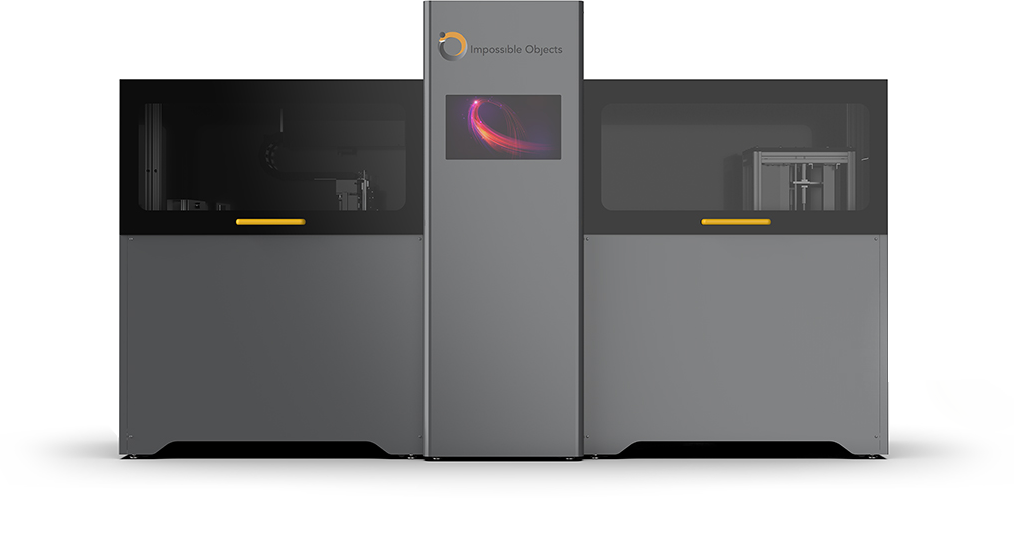
The Impossible Objects CBAM-2 3D printer.
Composite 3D Printing as a Service
Given the sophistication and novelty of CBAM, Hoover has determined that the best plan of attack is for Impossible Objects to offer 3D printing as a service. This will serve the dual purpose of educating customers as well as providing immediate revenues that will ultimately lead to machine sales as CBAM adoption increases.
“We’re doing something hard and unusual: bringing a brand new 3D printing technology to market. It’s not a variety of FDM or SLS. It’s brand new from the ground up. So, one of the things that the company had started right before I came in, which I’ve really doubled down on, is actually selling parts, not only machines, because it’s a lot easier for someone to buy parts on-demand than it is to make a large financial commitment to capital equipment.”
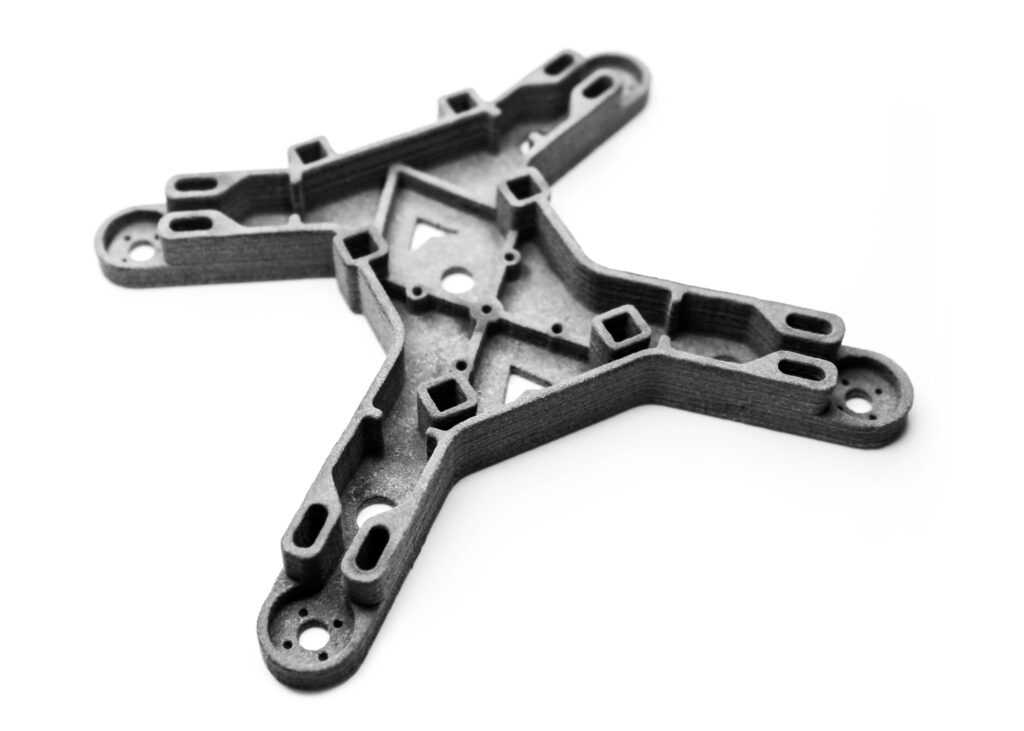
Carbon Fiber PEEK 3D Printed Drone Chassis
As other developers of significantly different AM technologies have learned, parts-as-a-service can be the best business model for introducing the process to market. By selling components, it’s possible to give clients a foot-in-the-door for using CBAM as they begin to learn the benefits and applications of the technology. In turn, they can provide Impossible Objects with feedback about how to improve the technology and what other features might be added.
“The reality is, if you have a new machine and process, the people who designed it can run it more reliably than training somebody else. Therefore, if you make the parts yourself first, you get that feedback from the market much sooner. Is the part quality good enough? Is the strength, surface finish, tolerance good enough? The sooner you get the feedback earlier in that design process then the faster we can solve our customers challenges,” Hoover said. “When addressing large manufacturing applications and opportunities, you are going to have to make parts first. Before anyone makes a large investment, they’re going to want parts to decide that it’s good enough, particularly if it’s a brand new technology.”
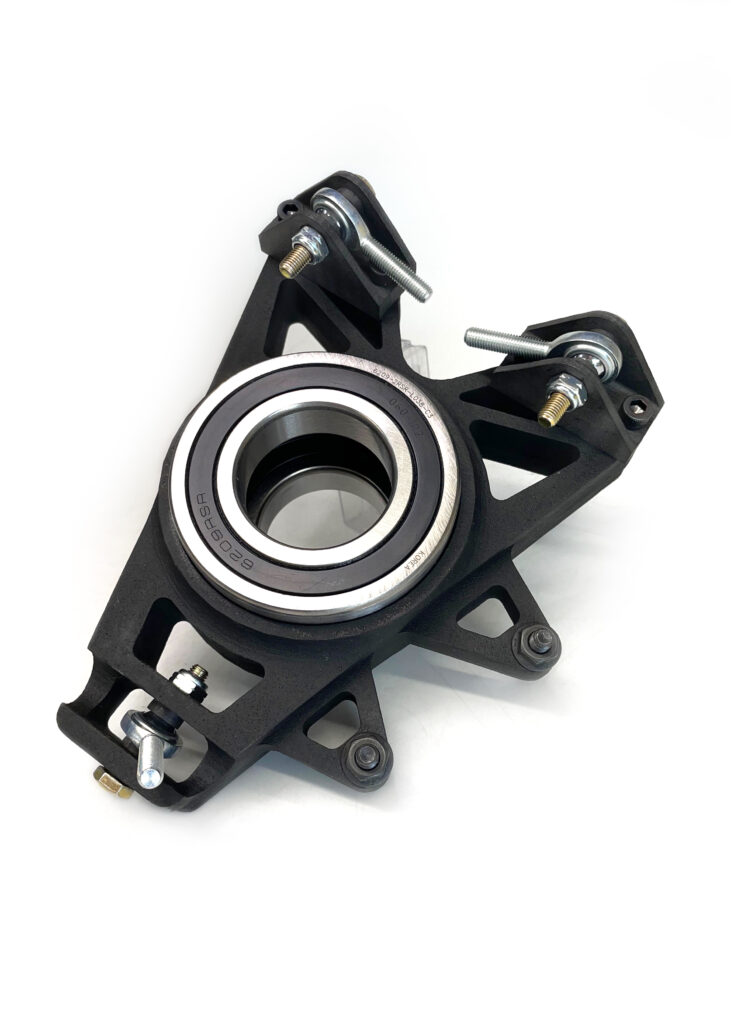
Carbon Fiber PEEK Joist Assembly
We’ve seen 3DEO apply the same approach for its metal 3D printing technique, all while developing a steady stream of customers and the potential to sell machines themselves when the time is right. Newer entrants, like Seurat, VulcanForms, and Freeform, are all 100 percent focused on establishing microfactories around their own AM technologies. Hoover was quick to point out that, though his firm is offering a parts printing service, it is also still very much in the business of selling printers, as well.
New Applications, Materials, and Machines
As the company has explored market opportunities, it has found an interesting niche for CBAM: producing tooling for the semiconductor sector. Specifically, the company is 3D printing pallets (roughly 12 in x 12 in or 12 in x 16 in in size) to transfer circuit boards. Because the boards are soldered at 230 °C, the pallets have to be able to survive intense heat.
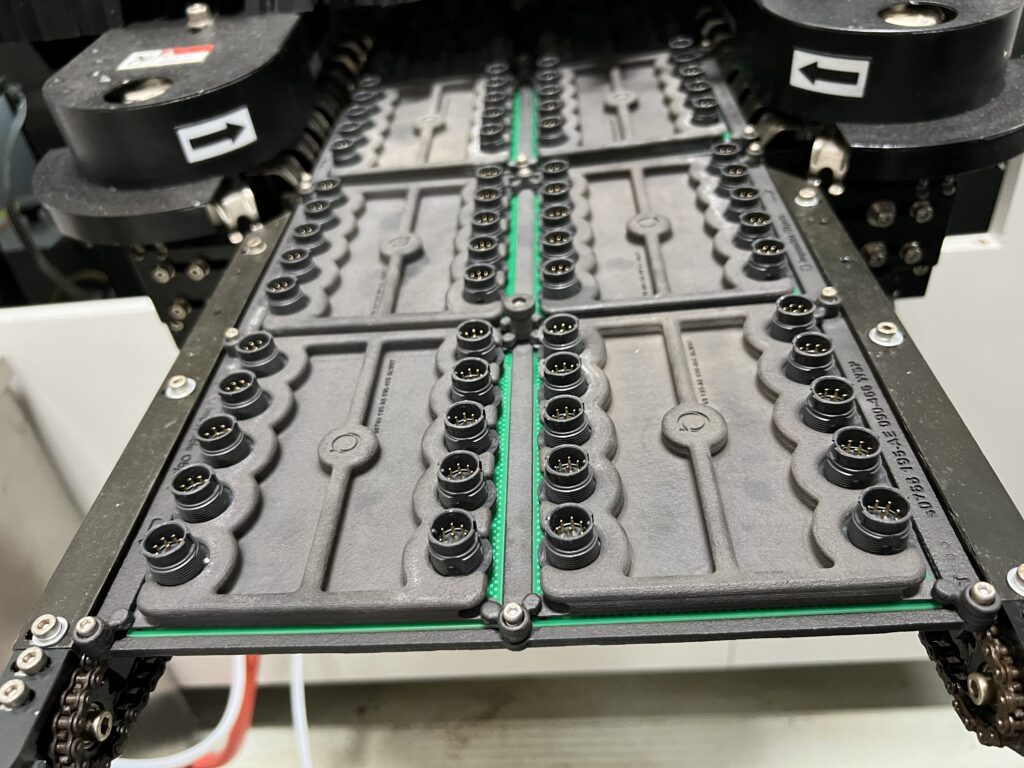
Absolute Electronics 3D Printed Solder Pallet
Fortunately, the combination of carbon fiber and PEEK can handle high temperatures and all manner of caustic environments, including the often-toxic world of semiconductor manufacturing. Moreover, the material combination means that the pallets are lightweight and durable, as well. “Electronics is changing all the time, meaning quick turnaround times for new board designs is essential,” Hoover said.
Another area of obvious application of CBAM is transportation, including aerospace. Over the past few years, Impossible Objects has won over $7 million in grants from the Air Force Research Lab to explore the 3D printing of drone parts and the development of new materials that are even stronger and more temperature resistant.
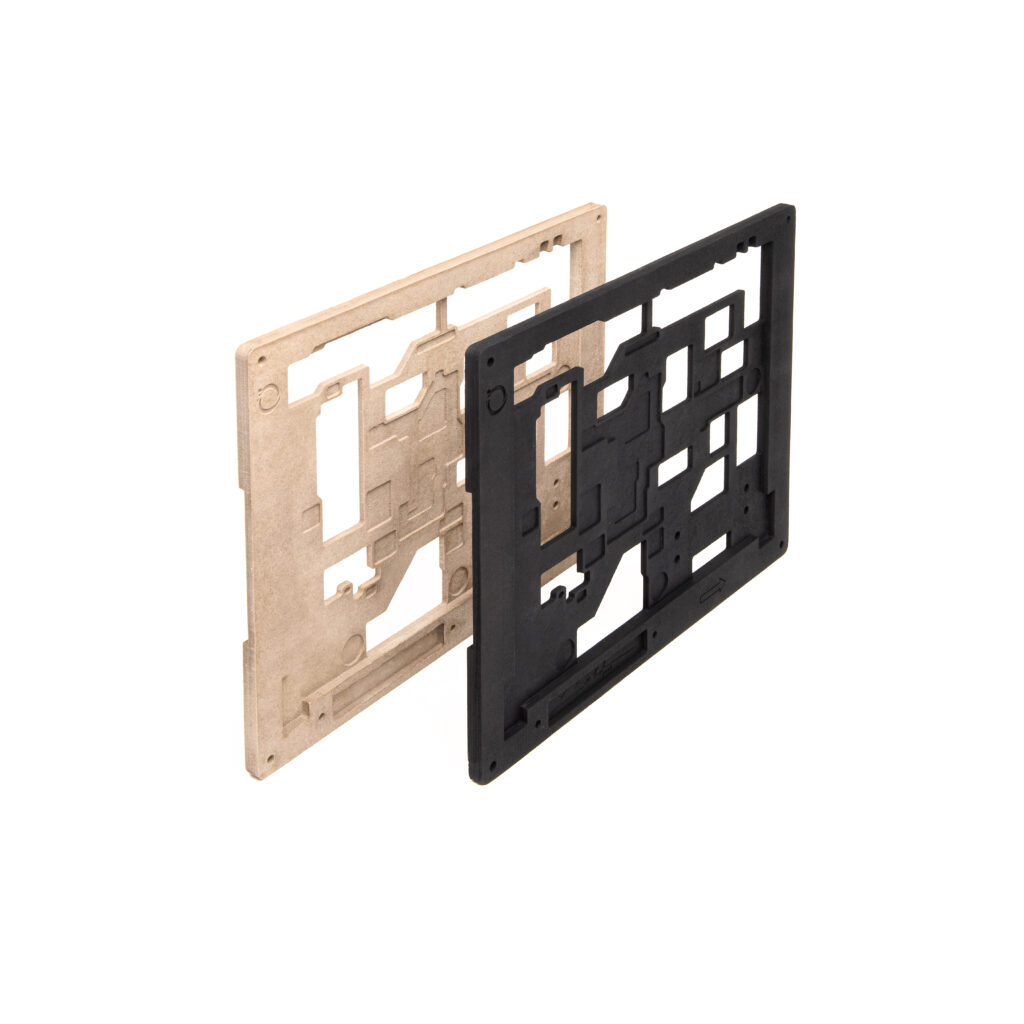
Glass Filled and Carbon Fiber PEEK 3D printed solder pallets
As the firm pursues those projects, it is naturally improving its overall product portfolio. This means larger, faster 3D printers. Hoover hinted:
“Because we do the printing all at room temperature, the technology can be very fast. So, we’re also working on the next-generation product. We’re actually going to have a big announcement at RAPID.””
To get to this new level of productivity and create a next-generation machine, Hoover sees the opportunity to draw in technology from the 2D printing market.
“When I was at Xerox, we broke the company into the high-speed printing market, printing 300 pages a minute and doing so reliably,” Hoover said. “Our focus at Impossible Objects is to bring the same productivity and reliability to 3D printing to address the manufacturing market. We’ve built a great team in our Northbrook and Rochester locations to do that.”
In this way, Hoover seems to have stepped into the position of Impossible Objects CEO at the perfect time, shifting the company to full-scale commercialization. Leaving us waiting for what exactly the business will showcase at RAPID, Hoover concluded:
“From our viewpoint, one area preventing 3D printing from penetrating into more manufacturing applications, is speed. So, we see Impossible Objects take 3D printing to places it’s never been that from that productivity.”
Images courtesy of Impossible Objects
Subscribe to Our Email Newsletter
Stay up-to-date on all the latest news from the 3D printing industry and receive information and offers from third party vendors.
You May Also Like
Further Understanding of 3D Printing Design at ADDITIV Design World
ADDITIV is back once again! This time, the virtual platform for additive manufacturing will be holding the first-ever edition of ADDITIV Design World on May 23rd from 9:00 AM –...
3D Printer Maker EVO-tech Reborn as NEVO3D — Once More With Feeling
EVO-tech was a 3D printing service and original equipment manufacturer established in 2013 and based in Schörfling am Attersee, Austria. The company produced high-quality material extrusion systems featuring linear bearings,...
3D Systems Brings 3D Printed PEEK Cranial Implant to the U.S. with FDA Clearance
For more than 10 years, 3D Systems (NYSE:DDD) has worked hand-in-hand with surgeons to plan over 150,000 patient-specific cases, and develop more than two million instruments and implants from its...
CDFAM Returns to Berlin for Second Annual Symposium
The second CDFAM Computational Design Symposium is scheduled for May 7-8, 2024, in Berlin, and will convene leading experts in computational design across all scales. Building upon the first event...































